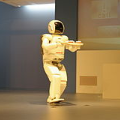All robots create consequential sound -- sound produced as a result of the robot's mechanisms -- yet little work has explored how sound impacts human-robot interaction. Recent work shows that the sound of different robot mechanisms affects perceived competence, trust, human-likeness, and discomfort. However, the physical sound characteristics responsible for these perceptions have not been clearly identified. In this paper, we aim to explore key characteristics of robot sound that might influence perceptions. A pilot study from our past work showed that quieter and higher-pitched robots may be perceived as more competent and less discomforting. To better understand how variance in these attributes affects perception, we performed audio manipulations on two sets of industrial robot arm videos within a series of four new studies presented in this paper. Results confirmed that quieter robots were perceived as less discomforting. In addition, higher-pitched robots were perceived as more energetic, happy, warm, and competent. Despite the robot's industrial purpose and appearance, participants seemed to prefer more "cute" (or "kawaii") sound profiles, which could have implications for the design of more acceptable and fulfilling sound profiles for human-robot interactions with practical collaborative robots.
翻译:所有机器人都产生相应的声音 -- -- 由机器人机制产生的声音 -- -- 然而,几乎没有什么工作探讨了声音如何影响人类-机器人互动。最近的工作表明,不同机器人机制的声音会影响人们的感知能力、信任、人像和不适。然而,对这些感知负责的物理声音特征尚未明确确定。在本文中,我们的目标是探索机器人声音的关键特征,这些声音可能会影响感知力。我们过去的工作实验研究表明,较安静和更热的机器人可能会被视为更胜任和更不方便。为了更好地了解这些特性的差异如何影响感知,我们在本文提出的四套新研究中,对两套工业机器人手臂视频进行了音频操纵。结果证实,较安静的机器人被认为不太令人不解。此外,更热的机器人被认为更能、快乐、更暖和更能影响感知力。尽管机器人的工业目的和外观,但参与者似乎更喜欢“直观”(或“川博”)声音描述,这可能对设计更可接受的、更实用的机器人合成人际互动声音图产生影响。



